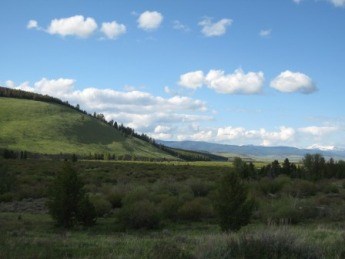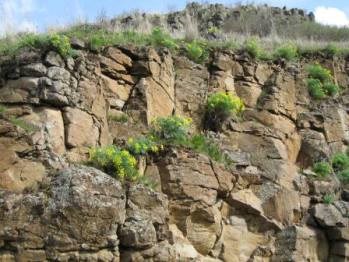
NPS photo Traditional Nez Perce culture was closely tied with the natural world, and plants had great importance materially and spiritually. Understanding Nez Perce relationships with plant communities can contribute to the overall understanding of Nez Perce culture, including subsistence, technology, medicine, spiritual matters, settlement patterns, travels, social organization, and relationships with other groups historically and today. Plants contributed to traditional Nez Perce culture in both material and spiritual dimensions. Plant foods provided over half of the dietary calories, with winter survival depending largely on dried roots, especially kouse (Lomatium spp.) and camas (Camassia quamash). Techniques for preparing and storing winter foods enabled people to survive times of colder winters with little or no fresh foods. Favorite fruits dried for winter were serviceberries (Amelanchier alnifolia), huckleberries (Vaccinium membranaceum), elderberries (Sambucus racemosa var. melanocarpa), and chokecherries (Prunus virginiana var. melanocarpa). Nez Perce textiles were made primarily from dogbane (Apocynum cannabinum), tules (Scirpus acutus), and western redcedar (Thuja plicata). The most important industrial woods were redcedar, ponderosa pine (Pinus ponderosa), Douglas fir (Pseudotsuga menziesii), willow (Salix exigua), and hard woods such as yew (Taxus brevifolia) and syringa (Philadelphus lewisii). 
NPS photo Since the end of the twentieth century, Euroamerican settlement in the Nez Perce homeland seriously restricted Nez Perce access to traditional plant resources. In the nineteenth century, missionaries and the United States government advocated that the Nez Perce people abandon their traditional ways and become sedentary farmers. Agricultural development, aggressive weed species, extensive grazing and land alterations have eliminated and further impacted persisting populations of traditional food plants. Nez Perce people were forced to adopt a Euroamerican diet because of restrictions on their movements and degeneration or destruction of traditional food plant habitats. Nonetheless, many contemporary Nez Perce people include traditional foods in their diet today. Nez Perce people have always incorporated technological elements of other cultures into their own. For example, as native dogbane became less available to them, they began using commercial hemp twine, commercial string, and disassembled gunnysacks to weave their soft flat bags. Some contemporary Nez Perce people use commercial dyes and synthetic yarns and experiment with techniques and materials characteristic of groups from other geographic areas. 
NPS Photo
| ||||||||||||||||
Last updated: October 29, 2019
